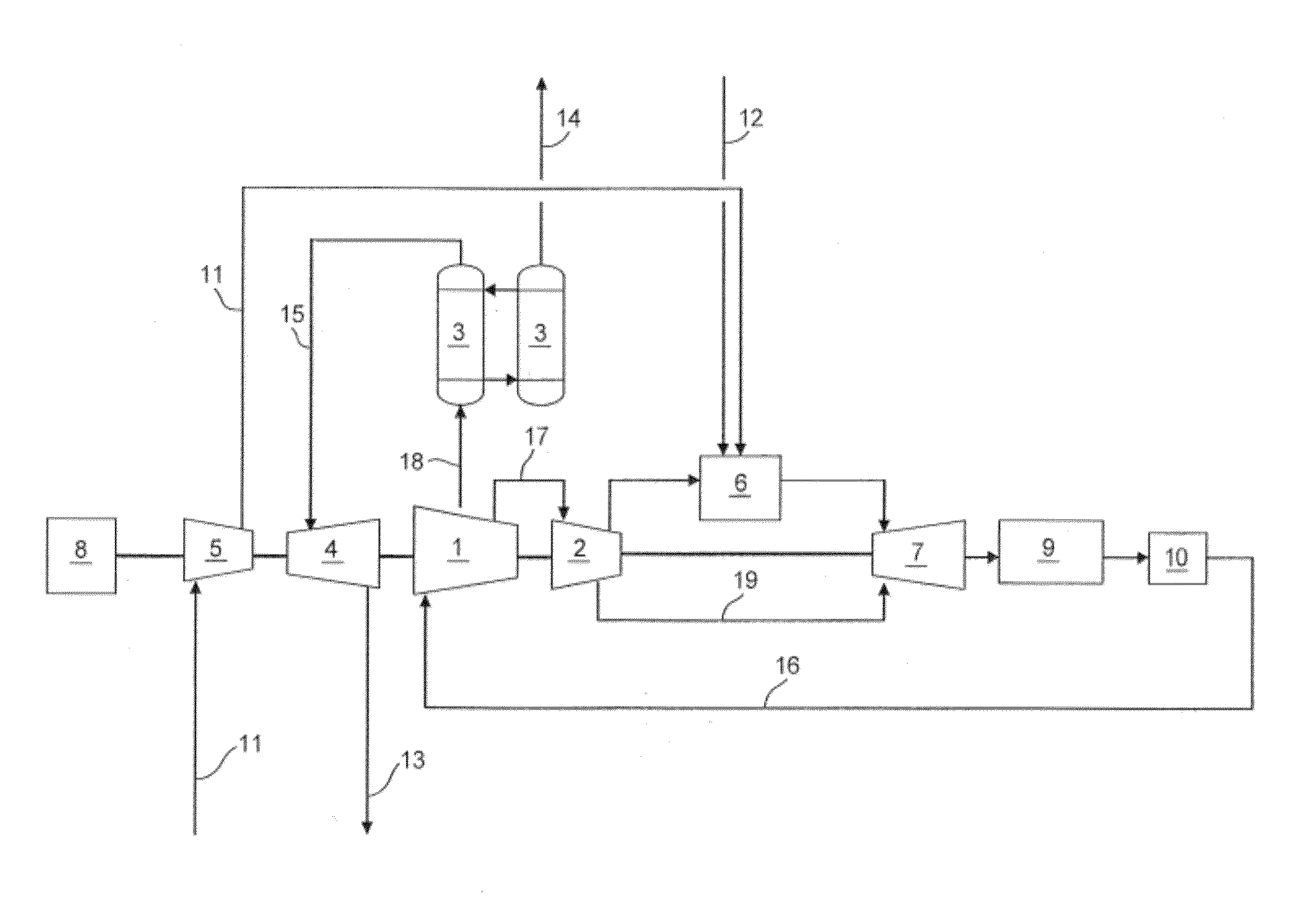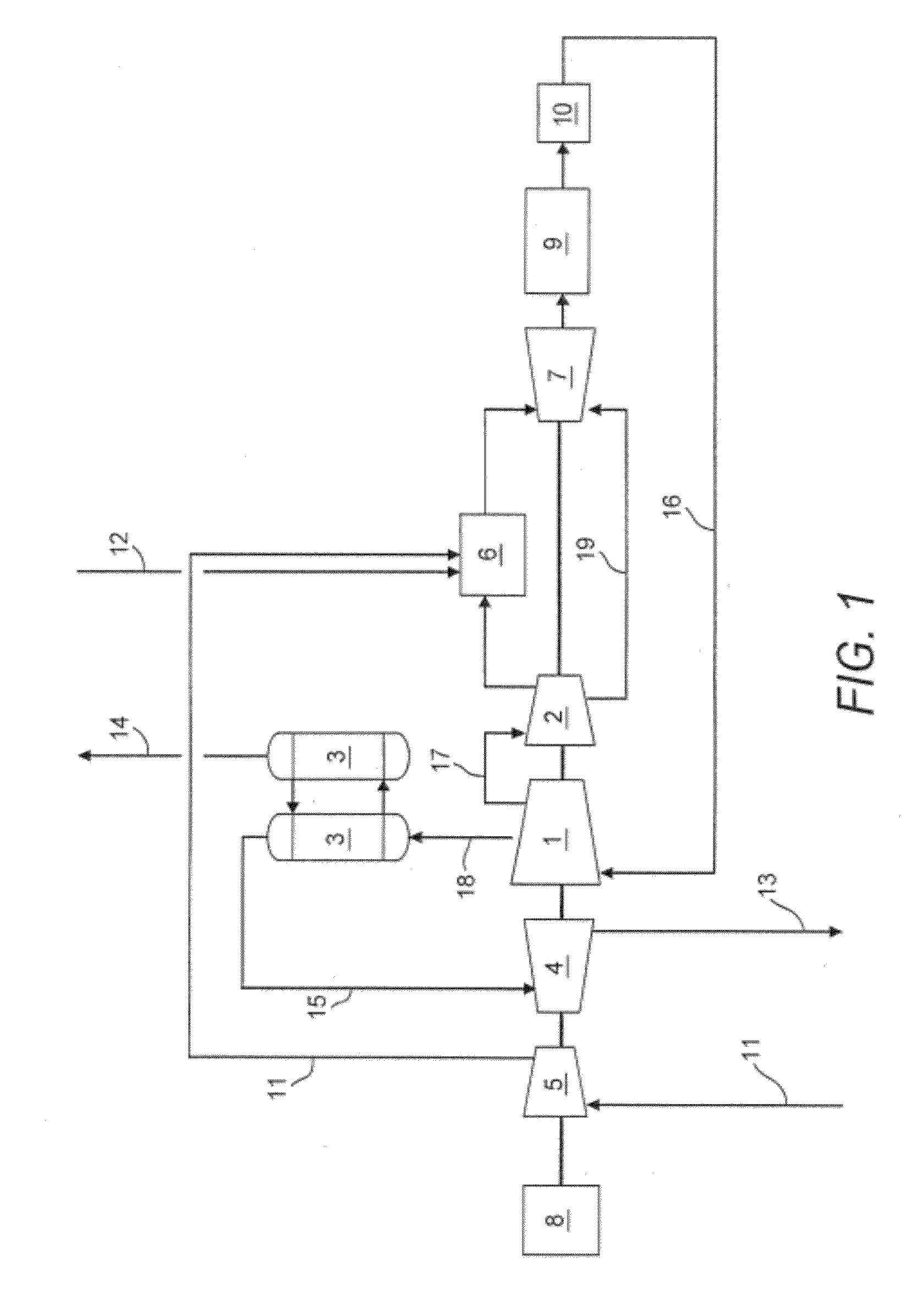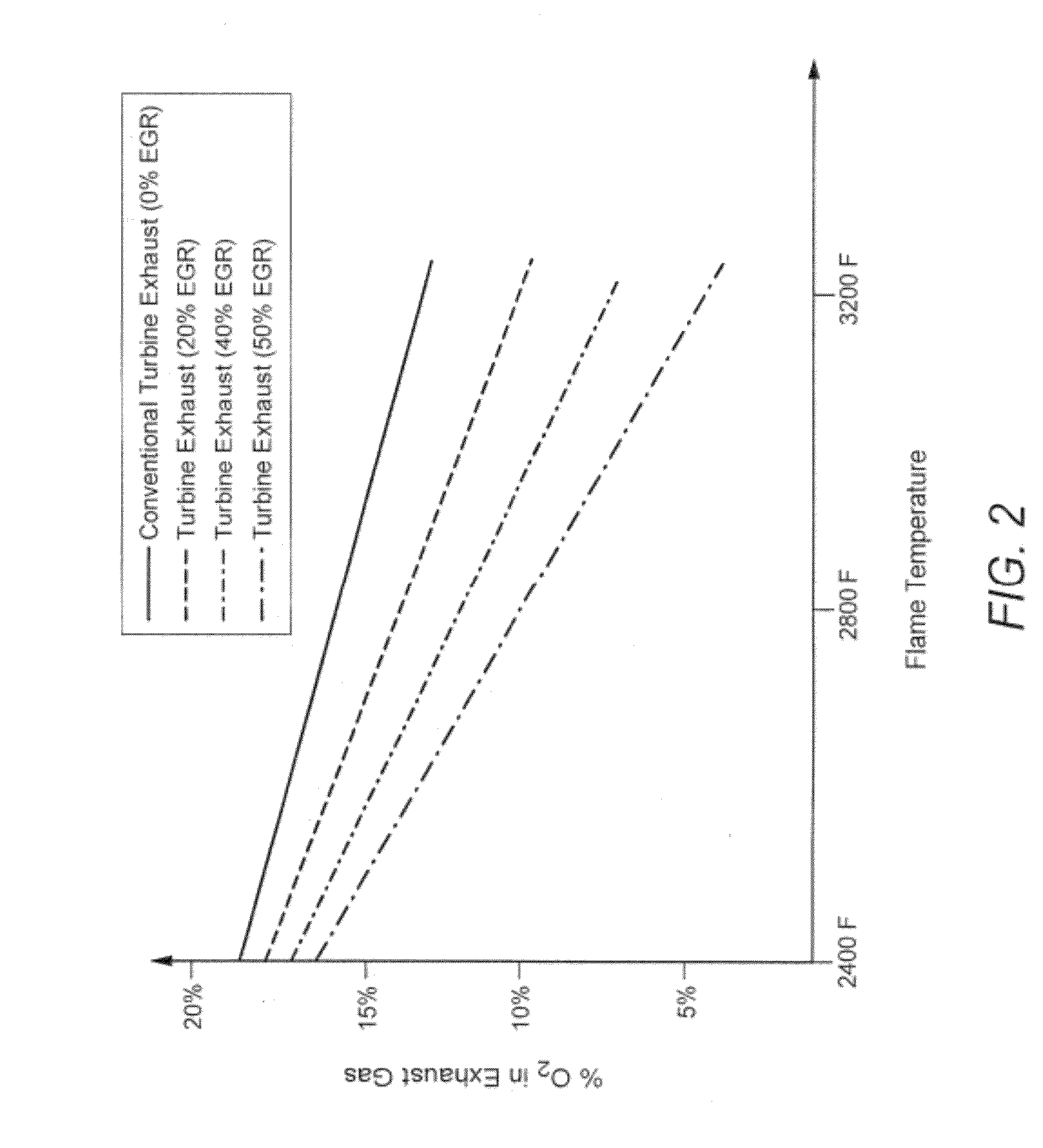Dry 3-way catalytic reduction of gas turbine NOX
a gas turbine and catalytic reduction technology, which is applied in the direction of machines/engines, mechanical equipment, separation processes, etc., can solve the problems of process suffering from known deficiencies, adversely affecting the cost and durability of construction materials, and increasing public scrutiny, so as to reduce the amount of oxygen remaining, reduce the amount of no in the exhaust gas, and increase the co2 concentration
- Summary
- Abstract
- Description
- Claims
- Application Information
AI Technical Summary
Benefits of technology
Problems solved by technology
Method used
Image
Examples
Embodiment Construction
[0029]An exemplary embodiment of the power generation system according to the invention includes the following basic components: A gas compressor that increases the pressure of ambient air fed to the system; a combustor capable of combusting a mixture of fuel (such as a hydrocarbon or syngas) and compressed ambient air to generate a high temperature exhaust gas stream; a conventional gas turbine engine downstream of the combustor with turbine blades moveable by the force of the expanded, high temperature exhaust gas; a high percentage EGR stream fed to the combustor; a 3-way catalytic reactor downstream of the gas turbine engine that contacts an exhaust gas stream having less than 4% by volume oxygen and removes a substantial amount of the NOx components (typically about 70%); a heat recovery steam generator (HRSG); a cooler (heat exchanger) to lower the temperature of a portion of the exhaust gas leaving the HRSG to form a cooled EGR stream; an EGR compressor that increases the pre...
PUM
| Property | Measurement | Unit |
|---|---|---|
| pressure | aaaaa | aaaaa |
| temperature | aaaaa | aaaaa |
| volume | aaaaa | aaaaa |
Abstract
Description
Claims
Application Information
 Login to View More
Login to View More - R&D
- Intellectual Property
- Life Sciences
- Materials
- Tech Scout
- Unparalleled Data Quality
- Higher Quality Content
- 60% Fewer Hallucinations
Browse by: Latest US Patents, China's latest patents, Technical Efficacy Thesaurus, Application Domain, Technology Topic, Popular Technical Reports.
© 2025 PatSnap. All rights reserved.Legal|Privacy policy|Modern Slavery Act Transparency Statement|Sitemap|About US| Contact US: help@patsnap.com



